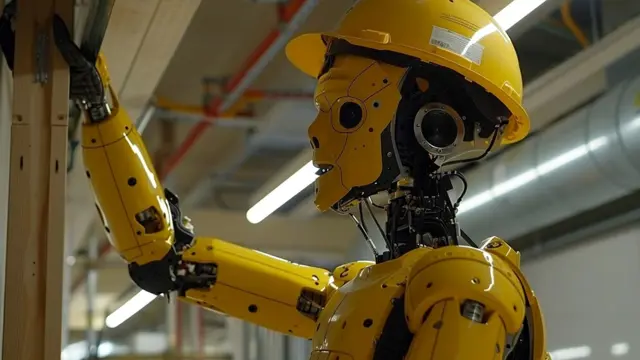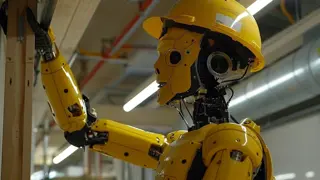
Industrial AI: Optimizing Processes and Enhancing Productivity
Self-paced Videos. Develop a practical Project on Data Visualisation with Python. Course Completion Certificate
Uplatz
Summary
- Reed courses certificate of completion - Free
- Uplatz Certificate of Completion - Free
Add to basket or enquire
Overview
Uplatz provides this end-to-end course on Industrial Artificial Intelligence (AI). It is a self-paced course with recorded video lectures. You will be awarded Course Completion Certificate at the end of the course.
Industrial AI refers to the application of artificial intelligence technologies and techniques to industrial contexts, aiming to improve efficiency, productivity, and decision-making processes within various industries such as manufacturing, energy, logistics, and more. It involves leveraging AI to automate, optimize, and enhance operations, leading to smarter factories, supply chains, and business models. Key components and applications of Industrial AI include:
- Predictive Maintenance: Using machine learning algorithms to predict equipment failures before they occur, reducing downtime and maintenance costs.
- Quality Control: Employing AI-powered vision systems and data analysis to detect defects and ensure product quality.
- Supply Chain Optimization: Enhancing supply chain management through demand forecasting, inventory optimization, and logistics planning using AI.
- Process Automation: Implementing robotic process automation (RPA) and AI-driven systems to automate repetitive and complex tasks.
- Energy Management: Utilizing AI to optimize energy consumption, reduce waste, and improve the efficiency of energy production and distribution.
- Smart Manufacturing: Integrating AI with IoT (Internet of Things) devices to create interconnected, responsive, and adaptive manufacturing environments.
- Human-Robot Collaboration: Enabling advanced interactions between humans and robots on the factory floor for tasks that require both human intuition and machine precision.
- Anomaly Detection: Identifying unusual patterns in data to detect faults, cyber threats, or inefficiencies in real-time.
- Digital Twins: Creating digital replicas of physical assets or systems to simulate, analyze, and optimize their performance.
By incorporating AI into industrial processes, companies can achieve greater operational efficiency, reduce costs, and drive innovation in their respective fields.
Certificates
Reed courses certificate of completion
Digital certificate - Included
Will be downloadable when all lectures have been completed
Uplatz Certificate of Completion
Digital certificate - Included
Course Completion Certificate by Uplatz
Curriculum
Course media
Description
Industrial AI - Course Syllabus
- Industrial AI in Practice - I
- Industrial AI in Practice - II
- Industrial AI in Practice - III
- Industrial AI in Practice - IV
- Industrial AI in Practice - V
- Industrial AI in Practice - VI
- Industrial AI in Practice - VII
- Industrial AI in Practice - VIII
- Industrial AI in Practice - IX
- Industrial AI in Practice - X
- Industrial AI in Practice - XI
- Strategies for Success in AI - I
- Strategies for Success in AI - II
- Strategies for Success in AI - III
- Strategies for Success in AI - IV
- Strategies for Success in AI - V
- Strategies for Success in AI - VI
- Strategies for Success in AI - VII
- Strategies for Success in AI - VIII
- Strategies for Success in AI - IX
- Enterprise AI - I
- Enterprise AI - II
- Enterprise AI - III
- Enterprise AI - IV
- Enterprise AI - V
- Enterprise AI - VI
- Enterprise AI - VII
- Enterprise AI - VIII
- Enterprise AI - IX
- Enterprise AI - X
- Enterprise AI - XI
Industrial AI has numerous practical uses across various industries, enhancing efficiency, productivity, and decision-making. Here are some key examples:
Predictive Maintenance:
- Example: In manufacturing plants, AI analyzes data from sensors on machinery to predict equipment failures before they occur, minimizing downtime and reducing maintenance costs.
Quality Control:
- Example: AI-powered vision systems inspect products on assembly lines in real-time, identifying defects with greater accuracy than human inspectors and ensuring high product quality.
Supply Chain Optimization:
- Example: Retail companies use AI to forecast demand, optimize inventory levels, and improve logistics, ensuring products are available when and where needed, reducing excess inventory and stockouts.
Process Automation:
- Example: In automotive manufacturing, robotic process automation (RPA) combined with AI automates complex assembly tasks, increasing production speed and consistency.
Energy Management:
- Example: AI algorithms optimize energy consumption in large industrial facilities by adjusting heating, cooling, and lighting systems based on real-time data, reducing energy costs and carbon footprint.
Smart Manufacturing:
- Example: Factories integrate AI with IoT devices to create smart manufacturing systems where machines communicate and coordinate with each other to optimize production processes and adapt to changes in real-time.
Human-Robot Collaboration:
- Example: In warehouses, collaborative robots (cobots) work alongside human workers to perform repetitive or strenuous tasks, increasing efficiency and reducing the physical strain on employees.
Anomaly Detection:
- Example: AI monitors industrial networks for unusual patterns that may indicate cyber threats or operational inefficiencies, allowing for quick response to prevent damage or data breaches.
Digital Twins:
- Example: Industrial companies create digital twins of physical assets, such as wind turbines, to simulate and analyze performance under various conditions, improving design and maintenance strategies.
Product Development:
- Example: AI accelerates product development cycles by analyzing large datasets to identify trends and optimize designs, leading to faster innovation and time-to-market.
Waste Reduction:
- Example: In food processing, AI systems analyze production processes to identify areas where waste can be minimized, improving yield and sustainability.
Safety Monitoring:
- Example: AI-driven systems monitor hazardous environments, such as oil rigs or chemical plants, to detect potential safety risks and trigger alerts to prevent accidents.
These practical applications demonstrate how Industrial AI is transforming various sectors by making operations more efficient, cost-effective, and responsive to changing conditions.
Who is this course for?
Everyone
Requirements
Passion and determination to succeed!
Career path
- Director of AI
- Head of Industrial AI
- AI Architect
- Senior Data Scientist
- Automation Engineer
- Robotics Lead
- Robotics Engineer
- Head of Industrial AI
- Lead Machine Learning Engineer
- AI Developer
- Data Scientist
- Systems Engineer
- AI Project Manager
- Chief AI Officer (CAIO)
- Chief Data Officer (CDO)
- Predictive Maintenance Specialist
- Quality Control Analyst
- AI Research Assistant
- IoT Specialist
- Data Analyst
Questions and answers
Currently there are no Q&As for this course. Be the first to ask a question.
Reviews
Currently there are no reviews for this course. Be the first to leave a review.
Legal information
This course is advertised on reed.co.uk by the Course Provider, whose terms and conditions apply. Purchases are made directly from the Course Provider, and as such, content and materials are supplied by the Course Provider directly. Reed is acting as agent and not reseller in relation to this course. Reed's only responsibility is to facilitate your payment for the course. It is your responsibility to review and agree to the Course Provider's terms and conditions and satisfy yourself as to the suitability of the course you intend to purchase. Reed will not have any responsibility for the content of the course and/or associated materials.


